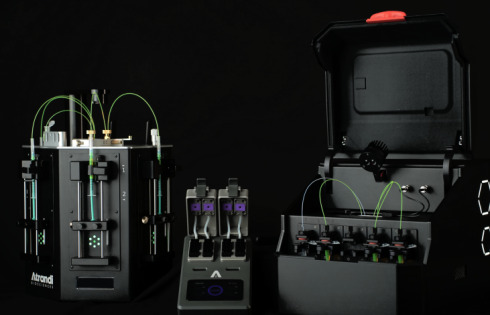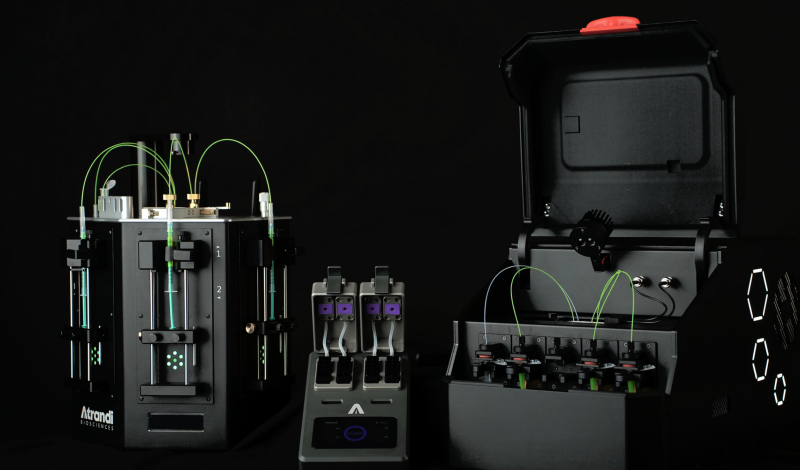
Atrandi Biosciences has raised $25 million in a Series A funding round led by Lux Capital, with participation from Vsquared Ventures, Practica Capital, Metaplanet, and CRIDS Capital. The company plans to use the funds to develop new products based on its semi-permeable capsule (SPC) technology as well as to set up an office in Boston which will allow the company to better serve its U.S. customer base.
Atrandi, which means “you discover” in Lithuanian, was launched in 2016 to address technological challenges associated with single-cell analysis. As Juozas Nainys, PhD, Atrandi’s CEO & co-founder, explained, the company was launched “to bridge a fundamental gap in biological research—the need for high-throughput, scalable technologies to manipulate and analyze single cells with precision.” Furthermore, “our SPC technology is a fundamental breakthrough born from a need to overcome the limitations of existing single-cell analysis tools, giving researchers the possibility to generate rich datasets with an unprecedented combination of throughput, multimodality and data quality.”
Atrandi will use some of the funds from its Series A to extend its offerings for DNA analysis from single cells, Nainys told GEN. The company already has a solution for microbial cells and expects to launch an option that works for eukaryotic cells later this year. They will be able to support whole genome analysis as well as more targeted analysis of single cells. Next year, Atrandi will focus on developing products for multi-omic analysis—specifically DNA and RNA analysis from single cells.
Designed for high-throughput single-cell research, Atrandi’s SPCs are aqueous compartments that are enclosed by a semi-permeable shell. They are designed to isolate single cells and nucleic acids while enabling the exchange of small molecules like enzymes and nutrients. The ability to exchange materials is an important part of SPCs value proposition for single cells and something that sets Atrandi’s technology apart from current droplet microfluidics technologies, according to Nainys. Typically, “once you form a droplet you can add reagents to it … but you can never remove [them],” he explained. “That’s very limiting [because] there are so many different molecular biology reactions that just do not work together or require specific pH [and] buffers.”
Nainys interest in single-cell technologies predates Atrandi’s founding. During his PhD, he worked in a laboratory focused on developing single-cell RNA sequencing technologies. “The single-cell revolution was really brought about by droplet microfluidics,” he said. “The lab that I joined specialized in droplet microfluidics and as experts in that particular technology, we saw that there are … a lot of things that can not be done in droplets.” That led him and Atrandi’s co-founders to launch the company in 2016 with an eye toward developing and commercializing SPCs as well as instruments for generating them.
To date, Atrandi has released three products based on its technology. The first of these is the Flux Microfluidic Device, a user-friendly system designed for high-throughput single-cell isolation into SPCs. The primary goal of this system was to “make the compartmentalization of the sample as seamless as possible so it’s really a push button,” Nainys said. “It’s more for a broader audience that doesn’t want to tinker with the technology.”
The two other products in Atrandi’s portfolio are the Onyx Droplet Generator, a microfluidic platform designed for high-throughput single-cell and single-molecule applications, and the Styx High-Throughput Screening Platform, which is designed for fluorescence-activated droplet sorting. These platforms are designed for users who want more control of their workflows and the ability to adjust different parameters as needed, Nainys said. They are compatible with SPCs as well as droplets. Additionally, “we also worked hard to make sure that the capsules integrate well with any readout method” including sequencing instruments, microscopy, and mass spectrometers.
So far, Atrandi has installed over 150 devices in labs in Europe, North America, and South Korea where they are used for a wide range of applications. About half of its customers are based in U.S. laboratories. People are using the solutions in different ways including studies in oncology, immunology, and microbiology, Nainys said. “It really is all over the map but at the end of the day it’s analyzing single cells as part of a complex biological system.”

